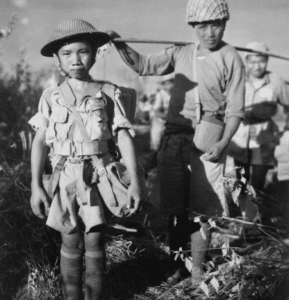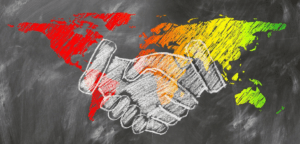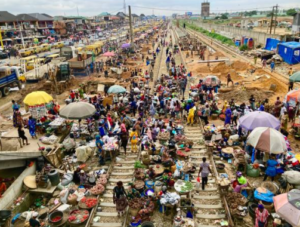Crisis hit areas
There are several crisis hit areas across the globe where it is particularly challenging for children caught up in circumstances beyond their families’ immediate control. UNICEF lists the following countries as especially problematic: Afghanistan; Burkina Faso, Mali and Niger; Cameroon; Central African Republic; Democratic Republic of the Congo; Ethiopia; Haiti; Mozambique; Myanmar; Nigeria; Somalia; southern Madagascar; southern Sudan; Syria; Venezuela; and Yemen. That list is in addition to the migrant crisis in Europe.
This blog looks briefly at conditions in just four of these places, Haiti, Madagascar, Nigeria and Myanmar.
Haiti
Ironically, for many years Haiti has been a popular stopover for cruise liners with its idyllic landscapes, Caribbean climate and cultural appeal.
Conditions in Haiti today
However, there are several deep set natural and socio-economic factors which are compounding problems facing the people and particularly children. The country is still only starting to recover from the 7.2 magnitude earthquake which devastated the region in August 2021. Hundreds of people were killed and thousands injured, among them many children. Countless buildings were badly damaged including schools, churches and hotels. Although a similar quake struck eleven years earlier, in August 2010, Haiti was still recovering from the economic shock caused by that earlier natural disaster. Recent geological events have only compounded problems with infrastructure, power supplies, and everyday services. This has all impacted severely on day-to-day life.
The present political situation
UNICEF also highlights persistent civil unrest in Haiti. There is gang-related insecurity, ongoing corruption, political upheavals and forced community displacement. Moreover, tourism which has provided much needed revenue for local population has once more been severely curtailed by the latest natural disaster, having already been severely impacted by the global pandemic. For example, cruise ships were just beginning to return in 2019. Moreover, many people were already living in poverty. UNICEF estimates that 57% of the population is abjectly poor.
The impact on children
This combination of challenging conditions is naturally proving disruptive for everyone living in Haiti. For children it means interruptions to educational programmes, disruption to medical services, generally low living standards and uncertainty about the future.
Humanitarian funding for Haiti
UNICEF estimates that in 2021 it committed $24 million to Haiti in humanitarian relief programmes. That amounted to a shortfall of $98 million, or 81%, of UNICEF’s projected $122 million humanitarian appeal target. While the US and Europe, together with many other countries, donate generously to UNICEF every year, such shortfalls in funding for emergency relief programmes are further impinging on opportunities for millions of children to flourish and enjoy the benefits of basic services and a reasonable standard of living.
Madagascar
The island is the celebrated setting for a Dreamworks blockbuster animation of the same name. Four cartoon animals from Central Park Zoo, in New York City, are stranded in the jungle on the island.
But the reality of life on Madagascar today is harsh. It is estimated that 69% of the population live below the absolute poverty line of $2.15 per day. There are several socio-economic issues facing the general population. There are widespread health problems, a lack of medical facilities, and long-term malnutrition remains endemic. UNICEF ranks Madagascar as the fourth most impoverished country. Half a million children under the age of five are experiencing malnutrition, while almost fifty percent of children are undersized for their age. Moreover, there remains a serious issue with access to a clean water supply. According to the charity WaterAid, 12 million people do not have access to safe water. That’s from a total population of about 27 million.
The impact of climate change
Madagascar is suffering from an ongoing famine which has been attributed directly to climate change. The rainy season has been much drier than usual over the past three years and prolonged drought has left 1.5 million people without a reliable food supply, because of the devastating impact on local agriculture. Children find themselves innocently caught up in the throes of climate change.
Nigeria
Nigeria is a rapidly developing country with growing economic prosperity, and abundant natural resources. It has the largest economy in Africa and is ranked 31st of all 195 countries in terms of GDP. However, that is only one side of the story. This is a country with an astonishing north south divide. UNICEF estimates that there are approximately 13 million people affected by conflict in the north of the country. Over 8 million of these are children. Of this overall total, nearly 2.5 million people have been displaced from their home communities, and a further million live in areas which are difficult to access or service with power and water supplies. UNICEF confirms that there are high levels of food insecurity. Therefore, malnutrition is affecting huge numbers of people, especially children. Meanwhile the political situation is very uncertain with lengthy and ongoing conflicts affecting the northeast and northwest of the country. Unfortunately, these unstable conditions are being exacerbated by localised outbreaks of disease like malaria, yellow fever and cholera.
Myanmar
This is the largest country in southeast Asia, with a population similar to England’s, approximately 54 million. However, the country is continuing to experience humanitarian and political crises. UNICEF suggests that conflict, human rights violations, social unrest and violence are not only rife, but out of control. Together with the aftereffects of the global pandemic, and economic shocks of climate-related natural disasters, Myanmar has witnessed poverty levels rise while public services have collapsed. This means that over a quarter of the population, including five million children, is desperately in need of humanitarian aid. Child survival rates are falling and more and more people are finding it impossible to escape from poverty.
Political instability
The army seized political control in 2021 replacing the civilian government. Regrettably Myanmar is considered to be corrupt, has high rates of crime, especially murder, and is a significant producer of drugs such as opium and methamphetamines.
Historical humanitarian concerns about child soldiers, slavery and human trafficking
In 2012, child soldiers were found to have been drafted into the army. The Independent reported that families were resorting to selling sons to serve in the army for the sum of $40 and a can of petrol, or a sack of rice. After international political pressure, the armed services released a total of 42 child soldiers later that year, and negotiations were held for the release of more. Child labour, trafficking and slavery also occur in Myanmar. In 2017 the government officially acknowledged that it was investigating 185 cases of human trafficking.
Child labour, trafficking and slavery also occur in Myanmar. In 2017 the government officially acknowledged that it was investigating 185 cases of human trafficking.
It is hard to imagine being desperate enough to sell off a child for a few ten-dollar bills, with some rice or fuel thrown in to incentivise the deal. Moreover, traffickers exploit women and girls who have no incomes, or very low informal incomes, with promises of better working conditions overseas. Tragically most of these women end up as sex workers, or are forced into early marriage, or become pregnant.
What is being done to help people, especially children, in Haiti, Madagascar, Nigeria and Myanmar?
UNICEF has undertaken to make its humanitarian relief and support work as efficient and effective as possible. In the last two years, its Core Commitments for Children (CCCs) have been thoroughly revised and incorporated into central policies that inform and steer its humanitarian programmes in life threatening circumstances across the world. The CCCs are nurturing stronger accountability for personnel and managers, guiding planning, research, monitoring, and empowering deployment of human resources. UNICEF is establishing robust links between its development and humanitarian work in every region in which it operates. The CCCs are ensuring that UNICEF becomes a nimbler, more reactionary and reliable humanitarian path maker and collaborative partner.
Moreover, UNICEF is developing new emergency procedures; improving its risk analysis and overall readiness for future crises; improving accountability through detailed feedback procedures among target peoples; enshrining the benefits of local partnerships; and strengthening collaborative partnerships with other charities and organisations to ensure collective impact where it is needed. It is through rigorous, evidence-led and farsighted responses like these that children can continue to be reached, helped and ultimately lifted out of crises brought on by poverty across the world.
It is through rigorous, evidence-led and farsighted responses like these that children can continue to be reached, helped and ultimately lifted out of crises brought on by poverty across the world.




